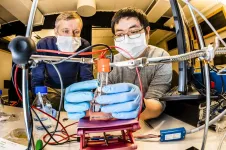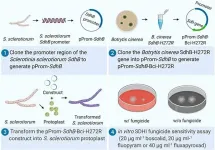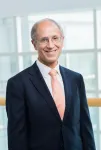A team of researchers at Oak Ridge National Laboratory demonstrated the ability to additively manufacture power poles from bioderived and recycled materials, which could more quickly restore electricity after natural disasters.
Using the Big Area Additive Manufacturing system, the team 3D printed a 55-foot pole designed as a closed cylindrical structure. They evaluated three different composite materials with glass fibers including cellulose ester, recycled polycarbonate and bamboo fiber reinforced polystyrene.
"We developed a modular design that is easy to manufacture, transport and assemble," ORNL's Halil Tekinalp said. "Sections within the pole can also be customized to accommodate wires and different heights can be supported, too."
The ability to 3D print power poles with locally harvested materials such as wood debris and trees makes production and installation more efficient. Future research efforts will focus on increasing production efficiency and improving material performance.
Media contact: Jennifer Burke, 865.414.6835, burkejj@ornl.gov
Image: https://www.ornl.gov/sites/default/files/2021-07/final_assembled_pole2.png Image: https://www.ornl.gov/sites/default/files/2021-07/printedtubecropped.jpg
Caption: ORNL researchers demonstrated a 3D-printed power pole made of bioderived and recycled materials could be easily manufactured, transported and assembled, enabling the quick restoration of power after natural disasters. Credit: ORNL, U.S. Dept. of Energy
Wireless charging - Get on the bus
Oak Ridge National Laboratory researchers demonstrated their wireless charging technology on an autonomous electric vehicle for the first time in a project with Local Motors.
The charging system developed at ORNL was installed on Local Motors' autonomous shuttle, the Olli. The architecture includes both wireless and wired charging, so the bus can connect to either DC or AC power, respectively. The team demonstrated power transferring from a grid interface to the vehicle's battery across a 6-inch air gap at approximately 96% efficiency.
An equipped EV charges hands-free, safely and efficiently, while parked over a charging pad. The technology has also been demonstrated on a light-duty SUV and a medium-duty delivery truck.
"Our wireless charging technology has matured enough that we can design and install equipment for a custom environment such as on the Olli, to give vehicle manufacturers the flexibility they need to accelerate toward a decarbonized, electrified transportation future," ORNL's Madhu Chinthavali said.
Media contact: Stephanie Seay, 865.576.9894, seaysg@ornl.gov
Image: https://www.ornl.gov/sites/default/files/2021-07/2021-P03084_0.jpg Image: https://www.ornl.gov/sites/default/files/2021-07/2021-P03084_0.jpg
Caption: ORNL researchers installed and demonstrated their wireless charging technology for the first time on an autonomous vehicle - the Local Motors Olli shuttle bus. Credit: Carlos Jones/ORNL, U.S. Dept. of Energy
Image: https://www.ornl.gov/sites/default/files/2021-07/2021-P03075.jpg
Caption: From left, ORNL's Madhu Chinthavali and Steven Campbell with Local Motors' Johnny Scotello and Seth Schofill demonstrated the Olli autonomous bus, which is equipped with the lab's wireless charging technology. Credit: Carlos Jones/ORNL, U.S. Dept. of Energy
Climate - Accelerating methane
Scientists studying a unique whole-ecosystem warming experiment in the Minnesota peatlands found that microorganisms are increasing methane production faster than carbon dioxide production. These results could mean a future with more methane, a greenhouse gas that is up to 30 times more potent than carbon dioxide.
A multi-institutional team examined extensive data from two years of above- and belowground warming at the Oak Ridge National Laboratory-led SPRUCE experiment, including analysis of the species' genome, proteins and metabolism.
"You couldn't see the trend with just the DNA data, but it was apparent when we used high-performance computing to analyze the datasets as a group," ORNL's Chris Schadt said. "Increases in plant productivity under warming and a shift in the vegetation from moss to more vascular plants are providing fuel for methanogenic activity."
The scientists' observations will inform climate models that predict the planet's future.
Media contact: Kim Askey, 865.576.2841, askeyka@ornl.gov
Image: https://www.ornl.gov/sites/default/files/2021-07/AP_20201004_SPRUCE_UAV_0050.jpeg
Caption: A team of scientists found that microbes at the SPRUCE experiment in the Minnesota peatlands are increasing production of methane under warming conditions. Credit: ORNL, U.S. Dept. of Energy
Fusion - Helping JET soar
Equipment and expertise from Oak Ridge National Laboratory will allow scientists studying fusion energy and technologies to acquire crucial data during landmark fusion experiments in Europe.
ORNL's Ted Biewer led a team that developed diagnostics equipment for JET, the Joint European Torus facility in the United Kingdom, which will allow scientists to better measure and understand the nuclear fusion process.
JET is a testbed for ITER, the international experiment under construction in France that will eventually use deuterium and tritium fuel to demonstrate fusion as a viable, carbon-free energy source.
Deuterium-tritium experiments have been rare in part because tritium is in short supply and challenging to handle. Fusion researchers will use this fuel for the first time in 25 years in JET to maximize fusion performance in anticipation of ITER.
"These JET experiments are historic. It's a rover-touching-down-on-Mars type thing for fusion," said Biewer. - Kristen Coyne
Media contact: Lynne Degitz, 865.466.6383, degitzlk@ornl.gov
Image: https://www.ornl.gov/sites/default/files/2021-07/JET1.jpg
Caption: This summer, supported by critical diagnostics equipment from ORNL, scientists at the Joint European Torus in the United Kingdom are slated to run their first fusion experiments using deuterium and tritium fuel in 25 years. Credit: EUROfusion
Image: https://www.ornl.gov/sites/default/files/2021-07/JET2.jpg
Caption: For the first time in 25 years, scientists will use deuterium and tritium to create a plasma inside the chamber of the Joint European Torus in the United Kingdom to study nuclear fusion. As in the earlier experiments, diagnostics systems developed by ORNL will play a key role in monitoring the plasma. Credit: EUROfusion
Electric vehicles - Charged-up planning
Researchers at Oak Ridge National Laboratory have developed a nationwide modeling tool to help infrastructure planners decide where and when to locate electric vehicle charging stations along interstate highways. The goal is to encourage the adoption of EVs for cross-country travel.
The free open-source software, called REVISE-II, takes into account EV growth forecasts, charging technology capabilities, intercity travel trends and driver demographics to help planners fill infrastructure gaps for charging facilities.
By inputting various assumptions, planners can generate scenarios for future charging infrastructure requirements to encourage acceptance of EVs and accommodate growth as more EVs are adopted.
"Providing infrastructure for intercity charging is a necessary step to make EVs fully competitive with conventional vehicles," ORNL's Fei Xie said. "This is a freely available planning tool that takes into account the complexity of intercity travel and helps decision makers more carefully plan these capital-intensive projects to support a nationwide, electrified future."
Media contact: Stephanie Seay, 865.576.9894, seaysg@ornl.gov
Image: https://www.ornl.gov/sites/default/files/2021-07/2011-P01916.jpg
Caption: The REVISE-II modeling tool developed at ORNL supports decision-making for electric vehicle charging infrastructure development along interstate highways in support of intercity travel. Credit: Jason Richards/ORNL, U.S. Dept. of Energy
Image: https://www.ornl.gov/sites/default/files/2021-07/REVISE-II%202020-2025%20png_0.png Image: https://www.ornl.gov/sites/default/files/2021-07/REVISE-II%202035-2040%20png.png
Caption: These maps illustrate an estimate of projected EV charging infrastructure buildout through 2025 and 2040, respectively, using the REVISE-II software tool. Credit: Fei Xie/ORNL, U.S. Dept. of Energy
Energy - Building a better thermostat
Oak Ridge National Laboratory researchers designed and field-tested an algorithm that could help homeowners maintain comfortable temperatures year-round while minimizing utility costs.
The algorithm learns over time to keep the home at residents' desired temperature settings while minimizing energy costs and adjusting to environmental conditions, all with no existing knowledge of the building. Results suggest the algorithm could save homeowners as much as 25% on annual utility bills.
"We found it's not practical to try to create a different model for each individual building across a neighborhood or city," ORNL's Helia Zandi said.
"We wanted an algorithm we could apply to different buildings that would automatically learn the characteristics of the environment and how to minimize operating costs while maximizing comfort."
The team's goal is to make the model universal so it can adapt to any system with the least amount of data necessary. - Matt Lakin
Media contact: Scott Jones, 865.241.6491, jonesg@ornl.gov
Image: https://www.ornl.gov/sites/default/files/2021-07/2019-P07408.jpg
Caption: An algorithm developed and field-tested by ORNL researchers uses machine learning to maintain homeowners' preferred temperatures year-round while minimizing energy costs. Credit: ORNL, U.S. Dept. of Energy
INFORMATION:






